|
|
|
Sort Order |
|
|
|
Items / Page
|
|
|
|
|
|
|
| Srl | Item |
| 1 |
ID:
094013
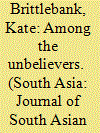

|
|
|
|
|
| Publication |
2010.
|
| Summary/Abstract |
The death at the hands of British troops of Tipu Sultan Fath 'Ali Khan (r. 1782-1799), the Muslim ruler of the predominantly-Hindu south Indian kingdom of Mysore, led to the discovery of an intriguing manuscript. Amongst the large amount of 'prize' or loot removed by the victors from Tipu's palace at Srirangapattana was a small 'diary', primarily containing a record of thirty-seven of the late ruler's dreams.1 Covering the period April 1786 to January 1799, and written in Persian in his own hand, this manuscript is probably the most personal document associated with Tipu Sultan that remains extant. William Kirkpatrick, the British officer who found the register and who was a Persian linguist, described how it had been located 'in an escritoire among several papers of a secret nature', noting in a letter to the governor-general, Lord Mornington, that the Mysore ruler had 'always [manifested] peculiar anxiety to conceal it from the view of those who happened to approach him while he was either reading or writing in it'.
|
|
|
|
|
|
|
|
|
|
|
|
|
|
|
|
| 2 |
ID:
094012
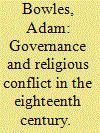

|
|
|
|
|
| Publication |
2010.
|
| Summary/Abstract |
Over the last couple of decades, it has become fashionable in some quarters to attribute the apparent rise of communal discord in colonial and post-colonial South Asia to the imposition on India of a 'modern secularist' ideology imported from the West. This foreign imposition, we are told, has undermined the conditions that enabled Indians associated with different religious and social identities to live side by side in relative harmony-conditions sometimes referred to as provided by something like (to paraphrase) a 'tradition of Indian tolerance rooted in its composite culture'.
|
|
|
|
|
|
|
|
|
|
|
|
|
|
|
|
| 3 |
ID:
094016


|
|
|
|
|
| Publication |
2010.
|
| Summary/Abstract |
The primary question addressed by this essay is: How are religion and religious propaganda in election campaigns in India regulated? I study this question by looking at the rulings of the Supreme Court, which is the final arbiter in all matters related to electoral disputes. The relevant portion of the Representation of the People Act (RPA)-the legislation governing the conduct of Indian elections passed in 1951-that relates to regulating religion are various provisions of Section 123.1 Section 123(3) deems as 'corrupt practice' election candidates or their agents appealing for votes on the grounds of religion or religious symbols; Section 123(2)(a)(ii) defines as corrupt practice attempts to induce a candidate or voter to believe that he would become an object of 'divine displeasure or spiritual censure'; and Section 123(3A) considers as corrupt practice attempts to promote enmity on grounds of religion, race, community or language. More recently, Section 123(3B) does the same for candidates propagating the practice of sati or glorifying it. In addition, Section 125 of the RPA makes attempts to promote enmity or hatred on the 'grounds of religion, race, caste, community or language' a punishable offence.
|
|
|
|
|
|
|
|
|
|
|
|
|
|
|
|
| 4 |
ID:
094010
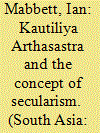

|
|
|
|
|
| Publication |
2010.
|
| Summary/Abstract |
This is cynical and unscrupulous behaviour. Here, in a widely admired ancient Indian text on the techniques of government and administration, the king is recommended to employ a female secret agent in the guise of a mendicant, a wandering nun ostensibly wedded to spiritual ideals of poverty and asceticism. Without regard for the honour of the ascetic calling, for the possible innocence of the suspect's wife, or for the principle that a suspected miscreant deserves a fair public hearing, the secret agent is authorised to abuse the trust inspired by her robes or by her apparent skill with magical potions (which may well be an illusion created by trickery, as other passages in the text clearly sanction), and to make herself the instrument of a summary execution.
|
|
|
|
|
|
|
|
|
|
|
|
|
|
|
|
| 5 |
ID:
094014
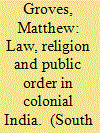

|
|
|
|
|
| Publication |
2010.
|
| Summary/Abstract |
Throughout history expanding imperial powers have consistently cast themselves as reluctant but dutiful policemen-bringers of peace and order to the periphery. The British were no exception. In India, however, the vaunted Pax Britannica was limited and patchy. While not exactly a myth, it never quite matched either the roseate claims made of it in official propaganda or the jingoistic perceptions of the masses at home.
|
|
|
|
|
|
|
|
|
|
|
|
|
|
|
|
| 6 |
ID:
094011
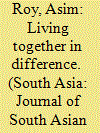

|
|
|
|
|
| Publication |
2010.
|
| Summary/Abstract |
If history is commonly viewed as a useful tool for seeking linkage between the past and present, the politics of colonial and post-colonial India has indeed come to place pre-colonial India at the centre of historical debates in contemporary India. Despite the relative dominance of the secular liberal nationalists in the colonial and the early decades of post-colonial India, the subsequent period saw the steady emergence and rise of the 'extremist' or 'militant' Hindu supremacist ideology of Hindutva-vad, the totalising, homogenising and unhistorical political-cultural construct of the notion of Hindutva (literally, the 'essence' of Hinduism or 'Hindu-ness'). The Hindutva-vadi (literally, the propagation of Hindutva-vad) has come to represent, in practical terms, an intolerant and violent Hindu majoritarian politics. In the name of redressing the alleged 'past wrongs and injustices' perpetrated on the contemporaneous Hindus by their 'medieval' Muslim conquerors, the Hindutva-vadi particularly target the minority Muslim community. The litany of those 'medieval' Muslim 'sins', in the eyes of today's Hindutva-vadi is long, and ranged from alleged discriminatory attitudes and measures, forced conversions, temple desecrations and destructions, construction of mosques at times on those ruined temples, to outright executions and slaughters.
|
|
|
|
|
|
|
|
|
|
|
|
|
|
|
|
| 7 |
ID:
094015
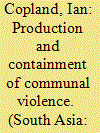

|
|
|
|
|
| Publication |
2010.
|
| Summary/Abstract |
Indian nationalists embraced the Partition of the subcontinent in 1947 in part because it appeared to offer a solution to the intractable 'communal problem' that had plagued the last three-quarters of a century of British rule; and at first the surgery of Partition seemed to make a difference. The incidence of overt 'communalism', in the shape of inter-ethnic collective violence between groups self-identified as 'Hindus' and 'Muslims', fell sharply after 1947 and remained low throughout the 1950s and early 1960s. But the remission did not last. Seventy-five significant communal incidents were recorded in 1955. The annual figure for 1965 was 173, for 1975 it was 205 and for 1985, 525.1 After a relative lull in the late 1980s, there was a further escalation in the last years of the twentieth century and in the first quinquennium of the twenty-first during which over 3,000 people were killed in the post-Ayodhya riots of 1992-93 and at least 1000 in the Gujarat pogrom of 2002. The level of communal violence in India today is greater, by a good margin, than it was in the late colonial era, and riots afflict far more of the country. No less than a quarter of India's 450 districts are now classified by the Home Ministry as 'hypersensitive'.
|
|
|
|
|
|
|
|
|
|
|
|
|
|
|
|
| 8 |
ID:
094009
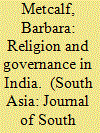

|
|
|
|
|
|
|
|